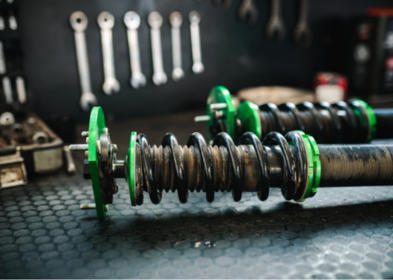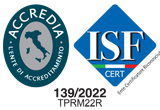
Sustainable Automotive: the mobility that makes no noise
Chiara Casagrande in collaboration with Emanuele Biagetti, Egaf Edizioni
In the context of global progress towards complete sustainability, the automotive industry must face new challenges. Let's explore the regulations that limit noise and vibration in vehicles, considering how these contribute to more sustainable mobility.
The concept of sustainability is transforming the world, posing complex challenges and stimulating innovations across various sectors, including automotive. This sector is responding promptly by proposing cutting-edge practices that involve every aspect of it. One of the key areas of sustainable development concerns the regulation of noise and vibrations, crucial for improving the acoustic environment, especially in urban areas.
Noise and Vibration Regulations: reference legislation
Environmental regulations have evolved over time thanks to the issuance of copious legislation and are becoming increasingly detailed and specific, favoring a quieter and, in some ways, more welcoming urban environment.
From the perspective of vehicle circulation, "types of vehicles" (homologated) have been subjected to tests to measure sound emissions since 1954 in Italy (with the issuance of law no. 877/1954 and later with the entry into force of the Highway Code in 1959) and since 1970 in European countries (with the issuance of directive no. 70/157/EEC). The test standards and the maximum limits of the acceptable sound level vary based on the vehicle class and, obviously, the era of the homologation and registration. Therefore, it is crucial for noise levels to remain within acceptable limits, defined for more recent vehicles by regulations such as Regulation (EU) no. 540/2014 (and subsequent amendments), applicable to motor vehicles for transporting people and goods. This regulation applies when granting the "global vehicle approval" anticipated by the regulation EU no. 858/2018 and relies on UNECE regulations no. 51 for the test method and UNECE no. 59 for replacement silencer devices. Similarly, regulation EU no. 168/2013, which governs the granting of "global approval for motorcycles and mopeds," as integrated by the delegated regulation EU no. 134/2014, provides, for assessing the sound level, the application of UNECE regulation no. 41 (for two and three-wheel motorcycles), which, in these cases, replaces the chapter 9 annex III of dir. no. 97/24/EC. Conversely, engineers, referring to the standard ISO 2631-1:1997, later amended in 2010, are engaged in developing advanced suspension systems to minimize vibrations transmitted to passengers and the ground. In tire design, manufacturers are required to indicate the measured value of external rolling noise (dB) on specific labels.
From the perspective of containing noise produced by transport infrastructures and, particularly, controlling vehicles in circulation, the law on the decentralization of administrative functions (DPR 24.7.1977 no. 616) assigns municipalities "the control, in circulation, of acoustic pollution produced by cars and motorcycles, as well as the detection, control, supplementary discipline, and prediction of sound emissions." The framework law on acoustic pollution (law no. 447/1995) and DPCM 14.11.1997 establish the fundamental principles for protecting the external environment and the living environment from noise pollution, pursuant to and for the purposes of art. 117 of the Constitution, assigning, in particular, the responsibility for "detecting and controlling the sound emissions produced by vehicles" to the municipalities. The Highway Code assigns the Police to control vehicles in circulation regarding the construction characteristics provided for environmental protection (art. 71), the presence (art. 72), and the efficiency (art. 79) of silencer devices during circulation and during periodic revision (art. 80), as well as nuisance noises caused by the driver’s behavior or by other vehicle characteristics (art. 155).
From the perspective of vehicle circulation, "types of vehicles" (homologated) have been subjected to tests to measure sound emissions since 1954 in Italy (with the issuance of law no. 877/1954 and later with the entry into force of the Highway Code in 1959) and since 1970 in European countries (with the issuance of directive no. 70/157/EEC). The test standards and the maximum limits of the acceptable sound level vary based on the vehicle class and, obviously, the era of the homologation and registration. Therefore, it is crucial for noise levels to remain within acceptable limits, defined for more recent vehicles by regulations such as Regulation (EU) no. 540/2014 (and subsequent amendments), applicable to motor vehicles for transporting people and goods. This regulation applies when granting the "global vehicle approval" anticipated by the regulation EU no. 858/2018 and relies on UNECE regulations no. 51 for the test method and UNECE no. 59 for replacement silencer devices. Similarly, regulation EU no. 168/2013, which governs the granting of "global approval for motorcycles and mopeds," as integrated by the delegated regulation EU no. 134/2014, provides, for assessing the sound level, the application of UNECE regulation no. 41 (for two and three-wheel motorcycles), which, in these cases, replaces the chapter 9 annex III of dir. no. 97/24/EC. Conversely, engineers, referring to the standard ISO 2631-1:1997, later amended in 2010, are engaged in developing advanced suspension systems to minimize vibrations transmitted to passengers and the ground. In tire design, manufacturers are required to indicate the measured value of external rolling noise (dB) on specific labels.
From the perspective of containing noise produced by transport infrastructures and, particularly, controlling vehicles in circulation, the law on the decentralization of administrative functions (DPR 24.7.1977 no. 616) assigns municipalities "the control, in circulation, of acoustic pollution produced by cars and motorcycles, as well as the detection, control, supplementary discipline, and prediction of sound emissions." The framework law on acoustic pollution (law no. 447/1995) and DPCM 14.11.1997 establish the fundamental principles for protecting the external environment and the living environment from noise pollution, pursuant to and for the purposes of art. 117 of the Constitution, assigning, in particular, the responsibility for "detecting and controlling the sound emissions produced by vehicles" to the municipalities. The Highway Code assigns the Police to control vehicles in circulation regarding the construction characteristics provided for environmental protection (art. 71), the presence (art. 72), and the efficiency (art. 79) of silencer devices during circulation and during periodic revision (art. 80), as well as nuisance noises caused by the driver’s behavior or by other vehicle characteristics (art. 155).
Traffic-induced vibrations: a silent enemy in our cities
While understanding the annoyances and discomfort caused by noise pollution is relatively straightforward, the consequences of excessive vibrations, especially in urban centers, are more complex to identify and counter. Vehicles in circulation produce noise primarily due to the engine, air resistance, and exhaust systems, but they also produce vibrations due to the bodywork and especially the rolling of tires on asphalt. In the case of European cities, often characterized by historical centers unique for the presence of numerous palaces and buildings of the past, frequently among the UNESCO-protected assets, the situation is even more delicate. It is well known that road traffic vibrations, day after day, can become a threat to older structures directly affected by vibrations transmitted to the building foundations. Various examples exist of cities, in Italy and beyond, where monuments and buildings have suffered precisely because of these vibrations. It's such a well-known phenomenon that, even in Bologna, although there is no conclusive evidence to establish a cause-effect relationship between the vibrations of dense urban traffic and the risk of the Garisenda collapsing, it was immediately thought there might be a connection between this phenomenon and the structural damage the Tower presents. Similarly, London, a city that intertwines history and modernity, sees its historic buildings face challenges posed by vibrations linked to traffic and railway infrastructure.
Stories from Italy:
- Matera, the City of Stones: Here, amidst the evocative dwellings carved into rock, monitoring programs have been implemented to protect the precious historical buildings from vibrations that could compromise their stability. Ongoing analysis allows for the deployment of effective mitigation strategies.
- Venice: In a city where traffic also involves watercraft, vibrations pose a dual challenge. Interventions to preserve the palazzi reflecting in the canals are frequent, as the perpetual motion of the waves and the passage of boats require special attention to safeguard a unique world heritage.
- Rome: In the capital, a city rich with invaluable architectural heritage, authorities have adopted measures to limit heavy traffic. This decision aims to protect historical structures from the effects of vibrations, helping to preserve the cultural fabric of the eternal city for future generations.
As previously mentioned, the limits on vehicle noise emissions for more recent vehicles in circulation are regulated by European norms, which generally specify the following acceptable sound levels:
- Light Vehicles (cars): The noise limit is set at 72 dB, which slightly varies depending on the vehicle's category and weight.
- Heavy Vehicles (trucks and buses): Noise limits are generally stricter, starting at 78 dB, with the aim of gradually reducing this limit in the future.
- Mopeds (engine size ≤ 50 cc): Noise limits are around 78 dB, but this can slightly vary depending on the vehicle type.
- Motorcycles (from 50 cc to 175 cc): Noise limits are often set between 80 and 81 dB.
- Motorcycles with engine displacement over 175 cc: Noise limits are set around 80-83 dB, depending on the vehicle's power and technical specifications.
In Italy, noise limits for vehicles in circulation are those established by the relevant norms in force at the time of vehicle type approval or registration. The maximum limit for each vehicle in circulation is noted on the circulation document; it must always be respected during use and is verified during the mandatory periodic revision (using sound-measuring equipment, if deemed necessary). However, local authorities can enforce stricter regulations in certain areas, especially urban zones or areas with particular historical and cultural value. Additionally, specific areas may be subject to limited-traffic zones (ZTL) aimed at reducing both noise and atmospheric pollution.
Other standards focus on reducing vehicle sound emissions, such as:
- In the United States, the Environmental Protection Agency (EPA) implements the Noise Control Act of 1972, offering guidelines on traffic noise control.
- ISO standards, like ISO 10844, which define criteria for measuring and reducing noise and vibrations, including harmonized test tracks.
- Many countries have specific regulations aligned with European or ECE standards.
In conclusion, noise and vibration regulations in vehicles are essential for harmonizing regulatory requirements on a national and regional level, as some countries adopt stricter requirements in urban areas where noise pollution is particularly critical. The automotive sector responds to these challenges by investing in innovation and research, introducing advanced technologies in engines, exhaust systems and related replacement devices, designing bodyworks that are more aerodynamically efficient, tires, materials used in vehicle construction, and other devices to minimize vibrations and noise. These regulatory and technological efforts enhance the quality of life in cities, creating quieter, safer, and more livable environments for residents. In summary, noise and vibration regulation is a crucial aspect of automotive legislation, aimed not only at ensuring comfort and tranquility during driving but also at promoting public health and reducing the environmental impact of transportation.






















